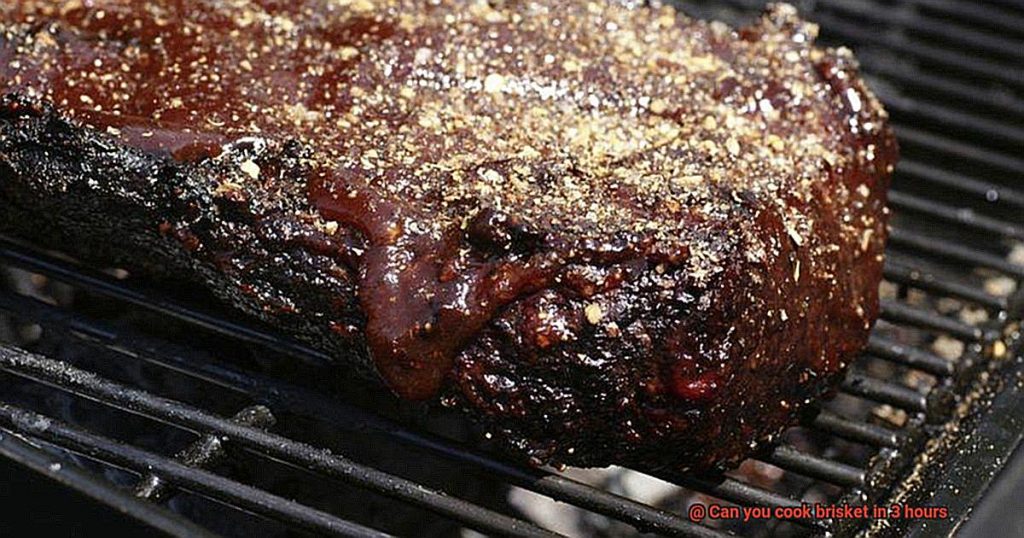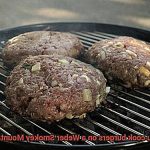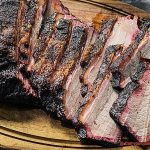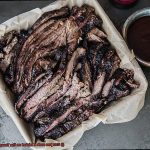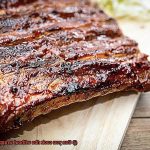Are you a brisket fanatic, but constantly find yourself short on time? Well, fret not my hungry friend, because we’ve got a game-changing method that will have you sinking your teeth into a succulent and flavorful brisket in no time.
Traditionalists may scoff at the idea of a quick-cooked brisket, but trust us when we say this isn’t your average fast food fix. We’re about to spill the beans on how you can achieve that tender, melt-in-your-mouth texture without sacrificing taste.
In this post, we’ll be diving deep into the techniques, tips, and tricks that will transform your kitchen into a brisket paradise in just three short hours. So grab your apron and prepare for an epic culinary adventure that will leave you wondering why you ever spent an entire day slaving over a hot stove.
Get ready to whip up a mouthwatering masterpiece that will have your taste buds doing the happy dance.
Contents
What is Brisket?
Renowned for its rich flavor and tender texture, brisket is often the star of traditional Texas-style barbecues. But what makes brisket so unique and why does it require slow cooking? Let’s delve into the world of brisket and discover the secrets behind its melt-in-your-mouth tenderness.
The Anatomy of Brisket:
Brisket consists of two main muscles, the flat and the point. The flat, also known as the “first cut,” is leaner and has a consistent shape, making it ideal for uniform slices. On the other hand, the point, also called the “second cut,” boasts marbling throughout, which imparts incredible juiciness and flavor. Whether cooked together or separated, both parts offer a tantalizing taste experience.
The Importance of Time:
To unlock the true potential of brisket, time becomes an indispensable ingredient. Traditional methods advocate for low and slow cooking, allowing the tough connective tissues within the meat to gradually break down. This slow process creates a tender and flavorsome end product worthy of its reputation. As the brisket cooks slowly over hours, fat renders and mingles with the meat, resulting in succulent bites that practically melt in your mouth.
The Magic of Collagen:
During hours of slow cooking, collagen found in brisket undergoes a mesmerizing transformation into gelatin. This conversion not only adds moisture but also contributes to its exceptional tenderness. A whole brisket can take anywhere from 10 to 16 hours to cook using traditional methods, ensuring that collagen’s magic works its wonders. The gelatin infuses every fiber with richness, creating a luxurious texture that is second to none.
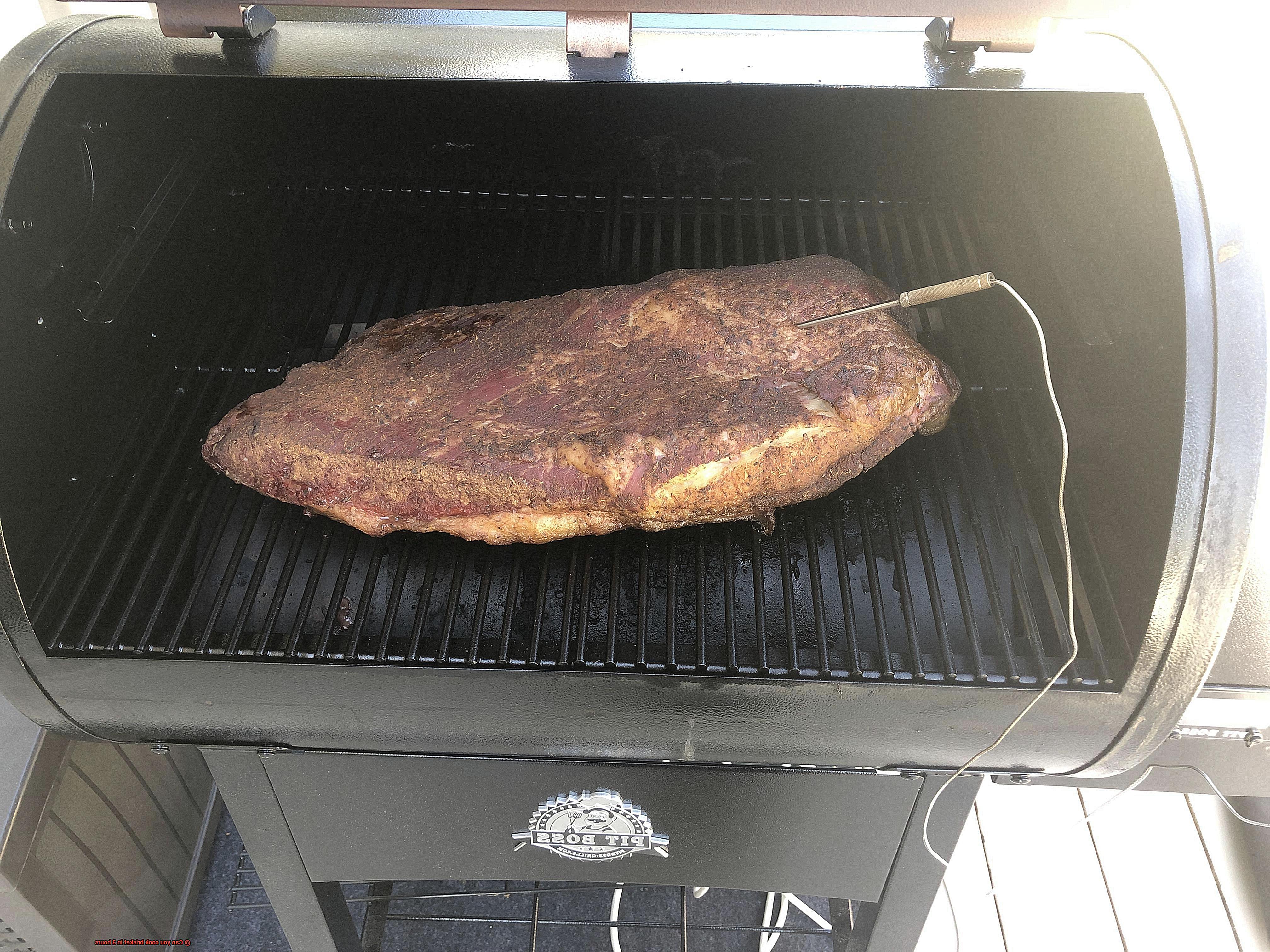
Can You Rush Perfection?
While it’s technically possible to cook brisket in as little as 3 hours, it’s not recommended if you desire optimal tenderness and flavor. Brisket demands patience. Attempting to speed up the cooking process may result in tough and chewy meat, robbing you of the sublime experience that awaits. The long cooking time allows for the flavors to develop fully and the connective tissues to break down completely, resulting in a tender and juicy brisket that is worth every minute of waiting.
Expert Tips for Alternative Methods:
For those seeking faster cooking times without sacrificing too much tenderness, alternative techniques can be employed. Using a pressure cooker or an Instant Pot allows for tenderizing brisket in 90 minutes to 2 hours. While this method can yield a more expedited result, it may lack some of the depth and complexity achieved through traditional slow cooking. Slicing the brisket into smaller pieces or marinating it before cooking can also expedite the process, though with slight differences in texture and taste.
Traditional Cooking Method for Brisket
Here, we will explore the secrets of grilling brisket using the slow and low technique, guaranteeing a culinary experience that will leave your taste buds singing.
Preparing the Brisket:
Choose a well-marbled brisket with a generous layer of fat to baste and infuse the meat during cooking. Season with a dry rub or marinade of your choice, allowing flavors to permeate overnight for maximum impact.
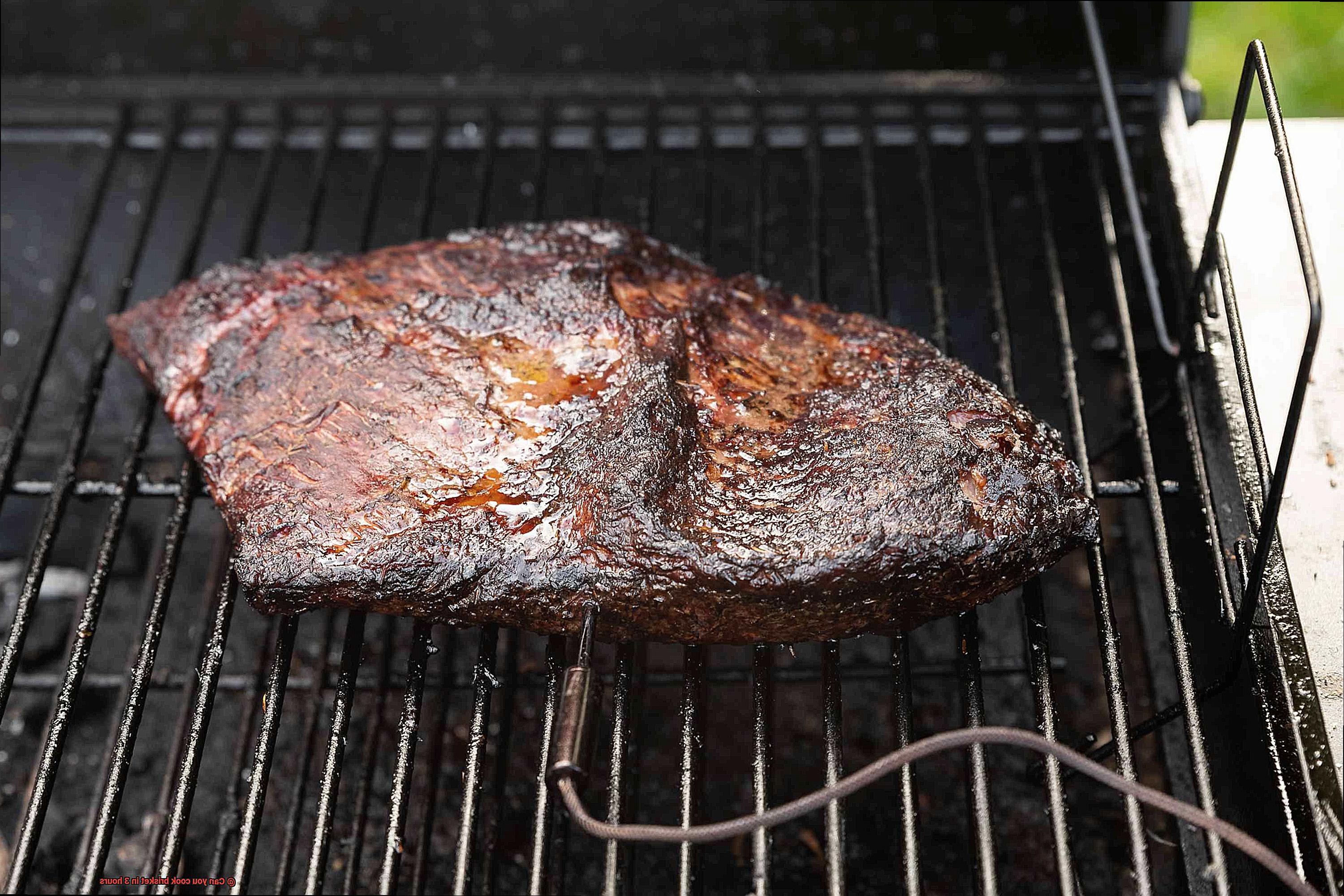
Setting up for Success:
Create the ideal cooking environment with a smoker or grill equipped with an offset firebox. Embrace hardwoods like oak, hickory, or mesquite for their signature smoky flavor. Preheat your grill or smoker to a steady temperature between 225 to 250 degrees Fahrenheit (107 to 121 degrees Celsius).
Slow and Steady Wins the Race:
Place the seasoned brisket on the grill or in the smoker with the fat side up. This allows the fat to render slowly, keeping the meat moist and flavorful throughout. Resist opening the lid frequently; maintain a consistent temperature without heat fluctuations.
The Stall: A Test of Patience:
Experience “the stall,” where the brisket’s internal temperature plateaus for hours. Embrace this critical step as connective tissues break down, transforming tough meat into culinary delight.
Basting and Monitoring:
Periodically baste the brisket with drippings or marinade, infusing additional layers of flavor while keeping it moist. Avoid disrupting the cooking process by opening the grill or smoker too often, prolonging grilling time.
The Perfect Finish:
Ensure your brisket reaches optimal tenderness by using a meat thermometer to check the internal temperature. Aim for 195 to 205 degrees Fahrenheit (90 to 96 degrees Celsius). Once achieved, remove from heat and let it rest for 30 minutes. This redistributes juices, guaranteeing a moist and delightful final result.
Pressure Cooking Brisket in 3 Hours
No worries. This guide will show you how to use the power of a pressure cooker to cook a 3-4 pound brisket in just 3 hours. Get ready for a tender and flavorful experience that will leave you wanting more.
Step-by-Step Instructions:
- Choose the right size brisket: Opt for a 3-4 pound brisket, which cooks more quickly and evenly in the pressure cooker.
- Trim excess fat: Trim any excess fat from the brisket to reduce cooking time and prevent greasiness.
- Season with a delectable dry rub: Generously season the brisket with a dry rub made from paprika, garlic powder, onion powder, salt, and pepper. Let it marinate for at least an hour to enhance the flavor.
- Prepare the pressure cooker: Add liquid like beef broth or water (or a combination) to create steam. The amount of liquid depends on your pressure cooker’s size and recipe.
- Place the seasoned brisket in the pressure cooker: Ensure it’s comfortably submerged in the liquid.
- Secure the lid tightly: Follow the manufacturer’s instructions to seal the lid properly.
- Set the pressure cooker: Adjust settings according to your model and cook for 3 hours.
- Allow natural pressure release: After cooking, let the pressure cooker naturally release its pressure for about 15-20 minutes before opening the lid.
- Check internal temperature: Use a meat thermometer to ensure the brisket reaches 195-205°F (90-96°C) for tenderness.
- Rest and slice: Carefully remove the brisket, let it rest briefly for juices to redistribute, then slice it.
Research:
Pressure cooking is an excellent method for cooking brisket quickly. This technique uses steam and high pressure to tenderize tough cuts of meat like brisket in a fraction of the time compared to traditional cooking methods.
When pressure cooking brisket, several factors come into play. Firstly, selecting the right size of brisket is crucial. A smaller cut, such as a 3-4 pound brisket, cooks more quickly and evenly than a larger one. Additionally, trimming excess fat from the brisket helps reduce cooking time and prevents greasy results.
To achieve tender and flavorful results in just 3 hours, proper seasoning is essential. Generously season the brisket with a dry rub made from paprika, garlic powder, onion powder, salt, and pepper. Allow the brisket to marinate with the dry rub for at least an hour before cooking to enhance its flavor.
When preparing the pressure cooker, add liquid such as beef broth or water (or a combination) to create steam. The amount of liquid required depends on the pressure cooker’s size and the specific recipe being followed.
Place the seasoned brisket in the pressure cooker, ensuring it is submerged in the liquid. Secure the lid tightly according to the manufacturer’s instructions.
Set the pressure cooker to cook for 3 hours. The high temperature and pressure created by the cooker will break down tough fibers in the brisket while infusing it with flavor. Cooking times may vary slightly depending on the specific pressure cooker used, so refer to the manufacturer’s instructions and adjust accordingly.
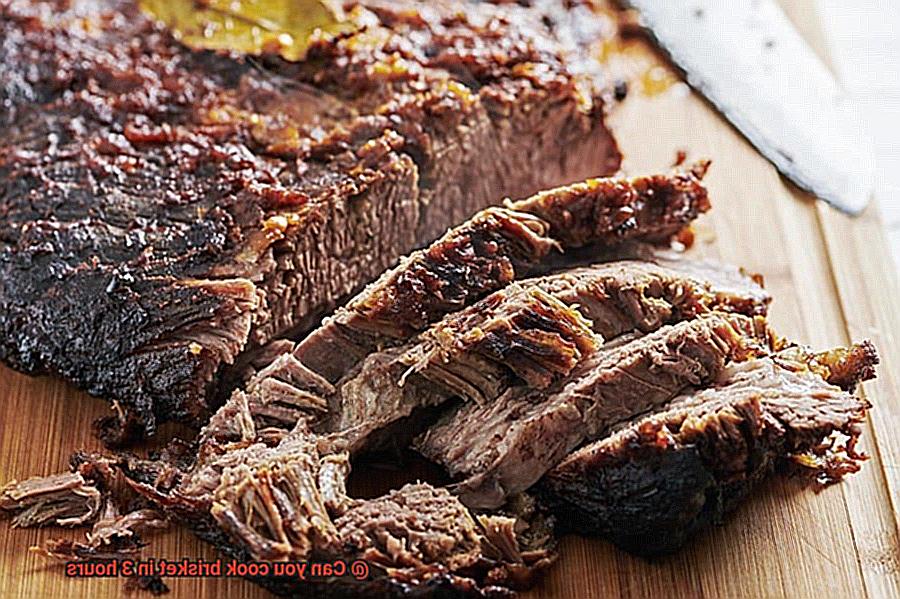
Slicing the Brisket for Faster Cooking Times
Slicing the brisket into smaller pieces can significantly reduce cooking time while still delivering a flavor-packed meal. Let’s dive into the steps:
First things first, trim any excess fat from the surface of the brisket. This not only speeds up cooking but also prevents unwanted flare-ups on your grill or in the oven.
Next, take a close look at the meat and identify the grain. You’ll notice lines or striations running across the surface. Slicing against the grain is crucial for tender and juicy results.
Armed with a sharp knife, make long, even cuts across the grain, dividing the brisket into smaller portions. Aim for slices around 1/4 to 1/2 inch thick, depending on your preference.
Now that you have perfectly sliced brisket, it’s time to infuse some flavor. You can marinate or season the slices before cooking, enhancing taste and tenderness.
When it comes to cooking your sliced brisket, there are a few options. Throw it onto a hot grill and cook for a few minutes on each side until it reaches your desired doneness. Alternatively, pop it into a preheated oven at a higher temperature than usual to expedite cooking.
Keep in mind that slicing the brisket will affect its texture. Sliced brisket tends to be leaner and less moist compared to whole cuts. However, if time is of the essence and you still crave flavorful and tender brisket, slicing it for faster cooking is a viable option.
Remember, cooking time depends on factors like slice thickness, cooking method, and desired doneness. To ensure safety, use a meat thermometer to check for the recommended internal temperature.
Marinating the Brisket to Reduce Cooking Time
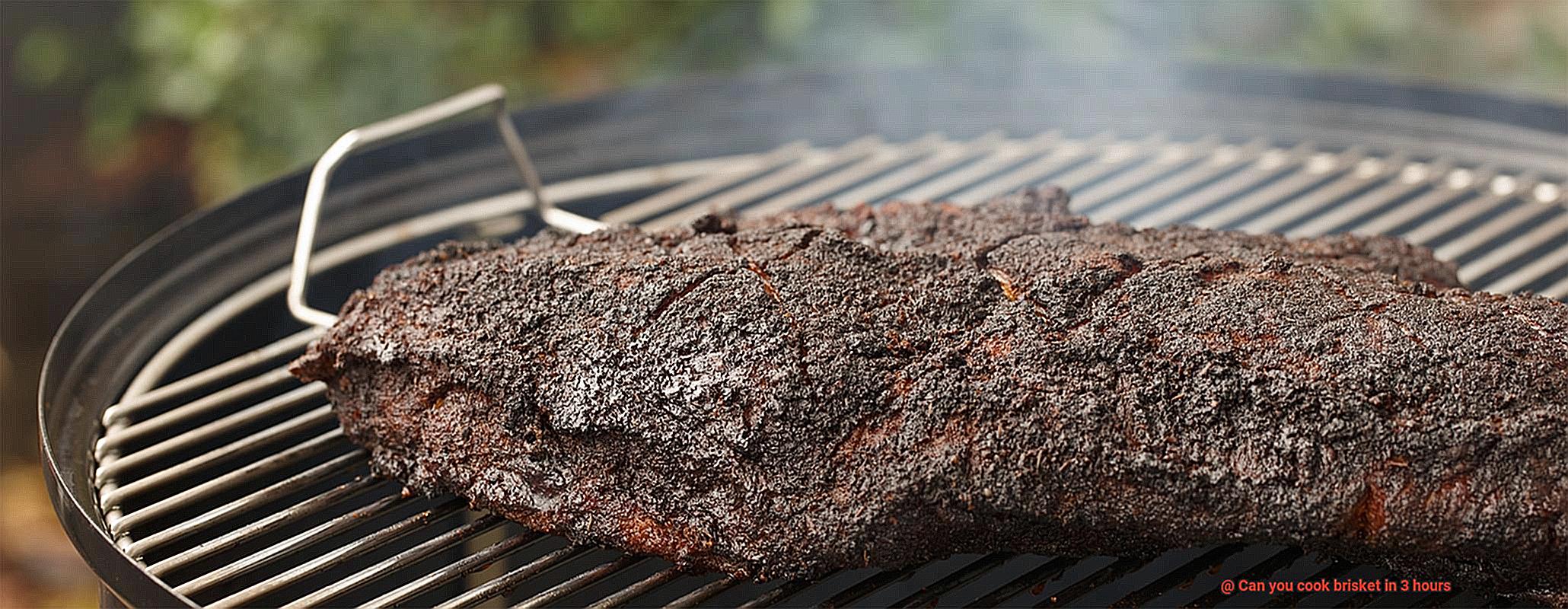
There’s a challenge – you have a whole brisket that needs hours of cooking time before it becomes tender and delicious. Is there a way to cut down on the cooking time without sacrificing flavor? Absolutely. Welcome to the world of marinating.
Marinating your brisket not only infuses it with incredible flavors but also helps to tenderize the meat, ultimately reducing the cooking time. The secret lies in creating a marinade that contains acidic ingredients, such as vinegar or citrus juice, along with a medley of spices and flavorings. The acid in the marinade works its magic by breaking down those tough fibers in the meat, making it more tender and easier to cook.
So, how do you create the perfect marinade? Start with a base of soy sauce or Worcestershire sauce for that umami kick. Add in minced garlic, finely chopped onion, and a touch of brown sugar for sweetness. Get creative and experiment with flavors like chili powder, paprika, or even a splash of your favorite hot sauce. Mix all these ingredients together in a bowl, and pour them over the brisket in a sealable plastic bag or container.
Now comes the crucial part – marinating. Let the brisket soak in all those delicious flavors for at least a few hours or even overnight if time allows. Ensure that the brisket is fully submerged in the marinade and refrigerate during this process. To evenly distribute flavors, turn the brisket occasionally.
Once you’re ready to cook your marinated brisket, remove it from the marinade and pat it dry with paper towels. This step promotes better browning and caramelization during cooking. Now, you have a choice of cooking methods – grilling, smoking, or slow roasting in the oven. While the cooking time will still depend on the size and thickness of the brisket, marinating can help reduce it by breaking down some of those tough fibers in the meat.
However, it’s important to note that even with marinating, a brisket is unlikely to be fully cooked and tenderized in just a few hours. Brisket demands low and slow cooking to achieve optimal tenderness. So, if you’re yearning for fall-apart, melt-in-your-mouth goodness, be prepared to invest some time into this culinary masterpiece.
The Results of Fast-Cooked Brisket vs Slow-Cooked Brisket
The debate between fast-cooked and slow-cooked brisket is as sizzling as the grill itself. Let’s dive in and explore the key differences between these two cooking methods.
Firstly, let’s talk tenderness and texture. Slow-cooked brisket takes the crown in this category. The low and slow cooking method allows the collagen in the meat to break down gradually, resulting in a tender and melt-in-your-mouth texture. It’s like a culinary symphony, with time as the conductor coaxing out the best flavors. On the other hand, fast-cooked brisket can still be tasty but tends to be firmer and chewier.
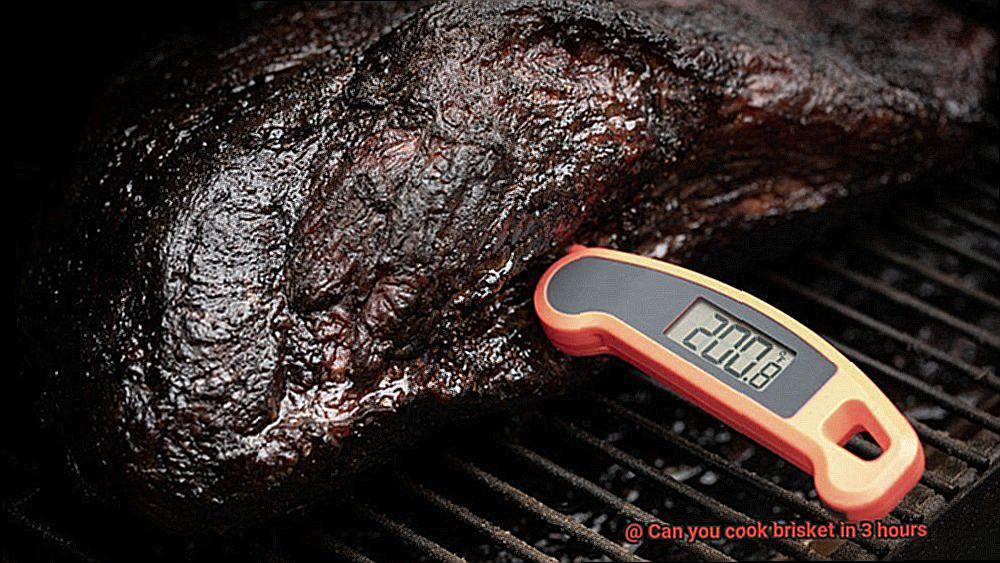
Now, let’s move on to flavor. Slow-cooked brisket once again emerges victorious. The long cooking time allows for rubs and marinades to permeate deeply into the meat, resulting in a more intense and developed taste. It’s like a flavor explosion in every bite. Fast-cooked brisket may not reach the same level of complexity, but it still has its merits.
Moisture is another critical factor to consider. Fast-cooked brisket retains more moisture due to its shorter cooking time. This translates into a juicier final product that will have your taste buds dancing with joy. Slow-cooked brisket can also be moist if cooked properly, but it may require more attention to prevent drying out.
So, which method should you choose? Well, it ultimately comes down to personal preferences and circumstances. If you have the luxury of time and crave the most tender and flavorful brisket, then slow-cooking is your best bet. However, if you’re pressed for time or prefer a firmer texture, fast-cooking can still deliver a delicious and satisfying meal.
Tips for Ensuring a Safe Internal Temperature
Brisket, with its rich flavor and tender texture, is a favorite among meat lovers. However, it is crucial to ensure that the brisket reaches a safe internal temperature to prevent any risk of foodborne illnesses. By following these tips, you can ensure that your brisket is cooked safely and enjoyed to its fullest.
Use a Meat Thermometer:
To accurately measure the internal temperature of the brisket, it is important to use a meat thermometer. This essential tool will give you an accurate reading and help you determine if the brisket is cooked thoroughly. Insert the thermometer into the thickest part of the meat, away from any bones or fat. This ensures that you are measuring the internal temperature of the meat rather than the surrounding areas.
Monitor the Temperature:
Throughout the cooking process, it is essential to monitor the internal temperature of the brisket. This can be done by periodically checking the temperature with the meat thermometer. By doing so, you can ensure that the brisket reaches the desired internal temperature of at least 145°F (63°C). This minimum safe temperature ensures that any potential bacteria present in the meat are killed off, reducing the risk of foodborne illnesses.
Cook Low and Slow:
For tender and flavorful brisket, it is recommended to cook it low and slow at a temperature of around 225°F (107°C). This allows for even cooking and tenderizing of the meat. Slow cooking at a lower temperature breaks down the connective tissues in the brisket, resulting in a melt-in-your-mouth texture. Remember, patience is key when cooking brisket.
Err on the Side of Caution:
If you are unsure about the doneness of the brisket, it is always better to cook it for longer rather than serving undercooked meat. It is better to have a slightly overcooked brisket than risking any potential health risks associated with undercooked meat. By allowing the brisket to cook for a little longer, you can ensure that it reaches the safe internal temperature and is safe to consume.
Let it Rest:
After reaching the desired internal temperature, it is important to let the brisket rest for a few minutes before slicing. This allows the juices to redistribute within the meat, resulting in a more tender and flavorful end product. Resting also allows the temperature to even out throughout the brisket, ensuring that it is cooked thoroughly and safe to eat.
Y8L3nuePKgk” >
Conclusion
The conclusion is clear: cooking brisket in just three hours is simply not enough time. Brisket is a tough cut of meat that requires slow and low cooking to break down the connective tissues and become tender and flavorful. Rushing the process will result in a tough and chewy brisket that lacks the melt-in-your-mouth quality we all desire.
To truly achieve mouthwatering brisket, you need to invest time and patience. The ideal cooking method for brisket involves smoking or slow-roasting it at a low temperature for several hours. This allows the fat to render, the collagen to break down, and the flavors to develop fully.
Imagine the tantalizing aroma of smoky barbecue wafting through your backyard as you patiently wait for your brisket to reach perfection. Picture yourself slicing into tender, juicy meat that practically falls apart with each bite. This is what proper brisket cooking can deliver.
While it may be tempting to try and rush the process, remember that good things come to those who wait. Take the time to properly cook your brisket, allowing it to transform into a delectable masterpiece that will have your friends and family begging for seconds.

